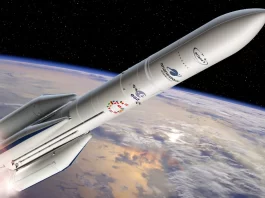In the summer of 2023, the Russian company Geoscan aims to launch the StratoSat-TK1 school satellite from the Vostochny cosmodrome. With the satellite’s assistance, the technology for delivering gadgets much smaller than nanosatellites, known as picosatellites, will be tested.
The device known as the StratoSat-TK1 was designed specifically for the firm known as Stratonavtika. It is anticipated that the Vostochny cosmodrome will be the location of its injection into orbit during the summer of 2023. According to Alexander Khokhlov, the head of the Geoscan tiny spacecraft project, this launch will test the process of transporting school pico-satellites, devices with a mass of at least 200 grammes, into orbit.
He explained that the satellite’s payload would be a container containing several smaller spacecraft called pico satellites. Such minute gadgets are currently being manufactured elsewhere in the world; nevertheless, it will be the first time for Russia to launch one into orbit.
According to Khokhlov, the business expects to launch four tiny spacecraft in 2023. In addition to StratoSata-TK1, the Gorizont satellite for the Baltic State Technical University Voenmekh will be launched into orbit during the winter of 2023-2024. With its assistance, it is intended to investigate the radiation resistance of microcircuits and changes in the characteristics of solar panels under the effect of space.
Moreover, the company is now developing the TUSUR-GO device for the Tomsk State University of Control Systems and Radioelectronics. In conjunction with the second RTU MIREA1 nanosatellite for the Moscow RTU MIREA, this satellite will be equipped with instruments for testing inter-satellite communications.
Khokhlov stated that the corporation launched the Geoscan-Edelweiss satellite on the Soyuz-2.1b rocket from Vostochny in August 2022. With the aid of the satellite, flight tests of the Geoscan 3U platform and its gas propulsion system suited for tiny vehicles, as well as the GNSS receiver (GNSS – global navigation satellite system), are conducted.
“Pico” is a prefix used in the International System of Units to indicate the fraction equal to ten to the minus twelve power (one trillionth). In satellite engineering, the prefixes “micro” and “nano,” signifying one millionth and one-billionth components, are commonly used to designate the size of spacecraft.
Nanosatellites (or cubesats) consist of 10 by 10 by 10 centimetre-cubic modules (units), and their mass is estimated in kilogrammes. Pico-satellite modules have dimensions of 5 by 5 by 5 millimetres, making them eight times smaller than nanosatellite modules. The mass of conventional full-fledged satellites ranges from several hundred kilogrammes and several tonnes.





